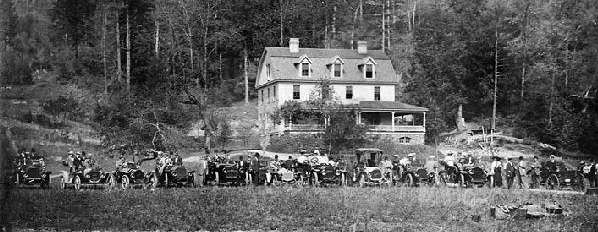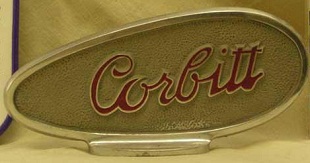Automobiles
See also: Highways; Roads; Trucks and Trucking, Thomas Built Buses, Inc., Automobiles for K-8 Students
 Automobiles revolutionized the American way of life, giving people previously unimagined mobility and greater freedom to live, work, and travel where they wanted. Exactly when the first automobile appeared in North Carolina is uncertain, although there is evidence to suggest that a steam-powered vehicle was used in the state as early as 1881 and perhaps even 1874. In all likelihood, the first automobiles to come to North Carolina used steam or electric motors to travel the few passable roads that existed at that time. The earliest vehicles were called "horseless carriages" because, except for the steering tiller mounted in the front and the engine tucked beneath the seat, they looked very much like a buggy without a horse. It is estimated that there may have been as many as 50 such "highwheelers" in the state by 1900.
Automobiles revolutionized the American way of life, giving people previously unimagined mobility and greater freedom to live, work, and travel where they wanted. Exactly when the first automobile appeared in North Carolina is uncertain, although there is evidence to suggest that a steam-powered vehicle was used in the state as early as 1881 and perhaps even 1874. In all likelihood, the first automobiles to come to North Carolina used steam or electric motors to travel the few passable roads that existed at that time. The earliest vehicles were called "horseless carriages" because, except for the steering tiller mounted in the front and the engine tucked beneath the seat, they looked very much like a buggy without a horse. It is estimated that there may have been as many as 50 such "highwheelers" in the state by 1900.
As automobiles changed design and became less expensive, their numbers quickly increased. Aside from a few scattered attempts by state car builders to create their own versions of the famous Ford Model-T or other automobiles between 1900 and 1920, there were no serious manufacturing competitors in North  Carolina. Only the Corbitt Motor Company of Henderson was able to market a production model, which never sold more than 100 units.
Carolina. Only the Corbitt Motor Company of Henderson was able to market a production model, which never sold more than 100 units.
By 1909, the first year in which the state required licensing of autos, 1,600 vehicles existed in North Carolina. In 1912 the number of registrations had reached 6,000, and by 1919 it had leaped to 109,000. With the rapid expansion of the after 1921 came a steady growth of automobile use, reaching 473,623 registrations by 1928.
As the twentieth century marched on, North Carolinians' love affair with the car led to the growth of suburbs, motels, shopping centers, highways, theme parks, drive-in restaurants, service stations, and other now-common features of the state's economy and culture. Beginning with World War I, motor vehicles including trucks also changed the face of the military. The automobile spurred many support industries ranging from oil and parts production to insurance, vehicle inspection, auto racing, and state regulation of drivers. At the state level, vehicle safety inspection is ultimately the responsibility of the North Carolina Department of Transportation and its Division of Motor Vehicles.
Educator Resources:
Grades K-8: https://www.ncpedia.org/automobile-social-game-changer-k-8
References:
Frank Coffey, America on Wheels: The First 100 Years, 1896-1996 (1996).
Robert E. Ireland, Entering the Auto Age: The Early Automobile in North Carolina, 1900-1930 (1990).
Capus Waynick, North Carolina Roads and Their Builders, vol. 1 (1952).
Additional References:
Job, Jennifer. "The Introduction of the Car to North Carolina." North Carolina Maps. http://www.lib.unc.edu/dc/ncmaps/car_k12.html (accessed June 14, 2012).
"Automobile & Truck Manufacturers" North Carolina Business History. 2007. http://www.historync.org/autos.htm (accessed June 14, 2012).
The North Carolina Transportation Museum official website: http://nctrans.org/ (accessed June 14, 2012).
Memory Lane Museum. http://www.memorylaneautomuseum.com/ (accessed June 14, 2012).
Estes-Winn Memorial Automobile Museum. http://www.grovewood.com/about-us/estes-winn-antique-car-museum/ (accessed June 14, 2012).
The Museum of Automobile History. http://www.themuseumofautomobilehistory.com/ (accessed June 14, 2012).
Image Credits:
"Photograph, Accession #: H.1914.316.2." Photograph. From the North Carolina Museum of History.
"Ornament, Vehicle, Accession #: S.HS.2004.45.1." Photograph. From the North Carolina Museum of History.
1 January 2006 | Ireland, Robert E.